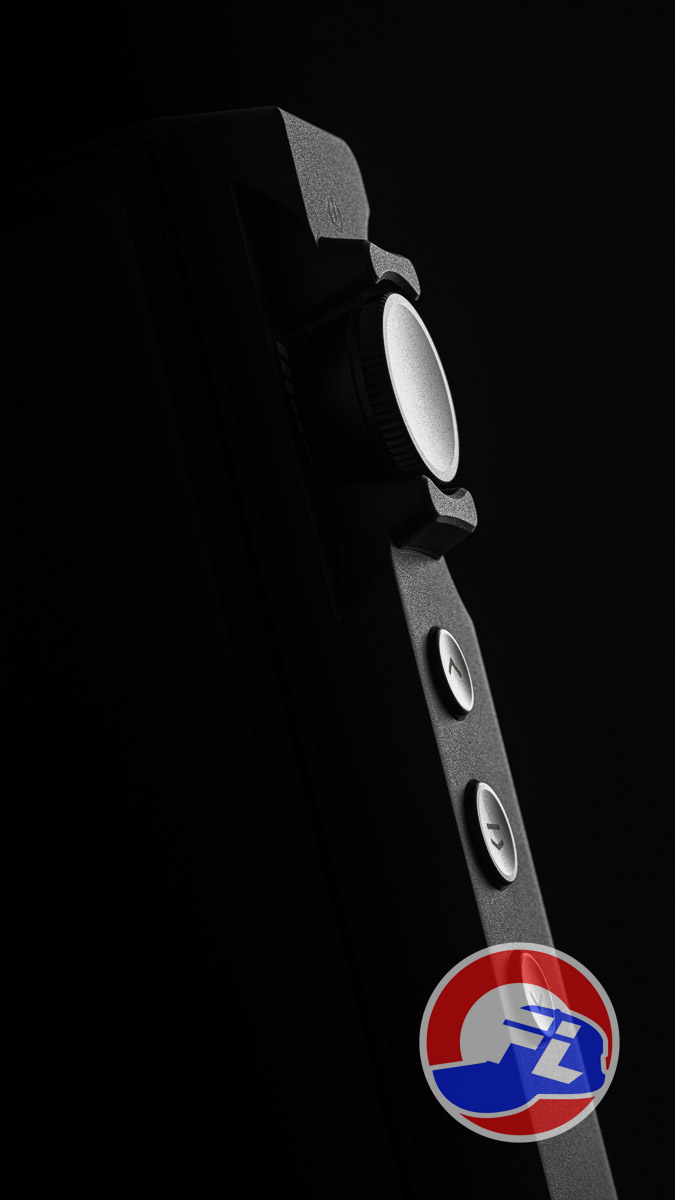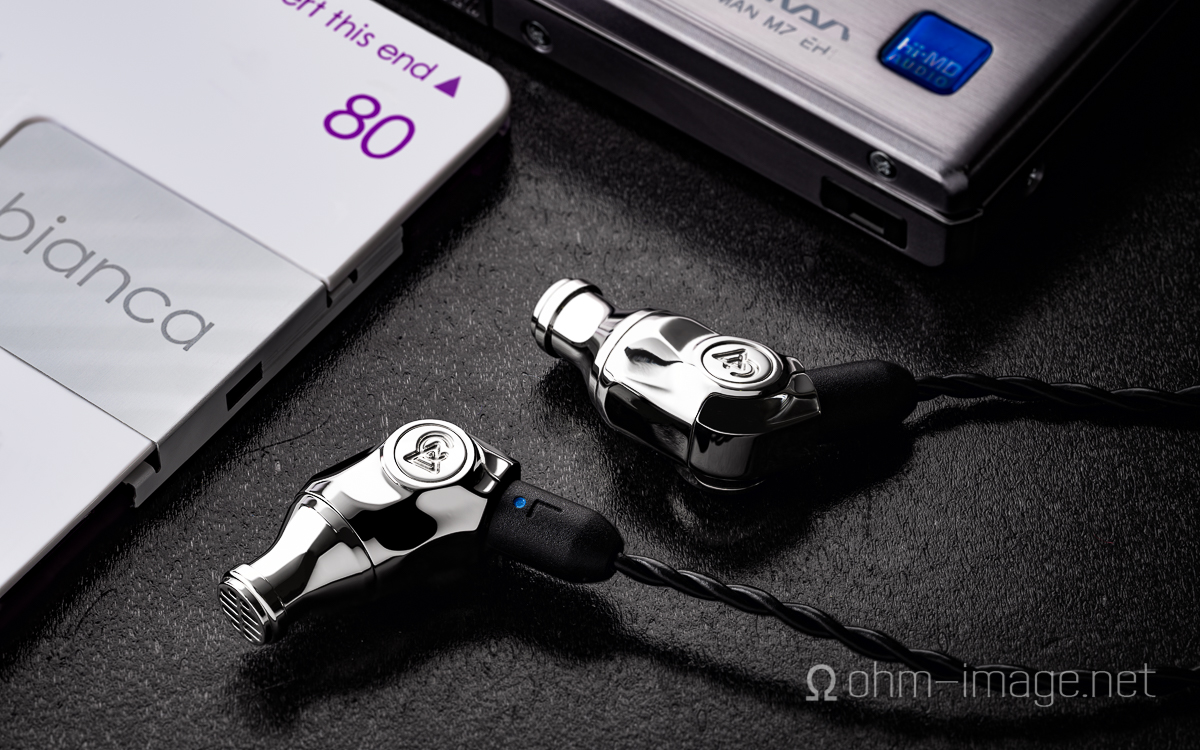This following is the verbatim text from my ohm-image.net review, linked below. Ohm is my website and I own all content on it. If you want to see more detailed photos of it, please head over there. Or hit up the video above.
ohmage to the Hidizs MS1-Rainbow
Disclaimer: Hidizs sent MS1-Rainbow to me for the purposes this review. It goes for 55$ USD. Inside is a 10,2mm dynamic driver. To find out more, hit up Hidizs’s MS-1 Rainbow page.
You already know what I think of the MS-1 Mermaid. Heck, you may remember my opinion of Hidizs’s AP100 DAP- and subsequently may understand why I don’t recommend pitting them together. If you can’t put two and two together, it is because the AP100 hisses way more than the MS-1 likes. Seriously, it basically blows it up. Incidentally, hiss is the main reason I don’t plug recent Hidizs earphones into my favourite Minidisc players and recorders, not to mention a number of DAPs out there.
Honestly, it is almost as sensitive as Shure’s SE846. You’ll just about hear trace shhhh shhhh sounds from every source, no matter its price. I say just about because a few choice modern devices are basically free of hiss. Hidizs say the MS-1’s sensitivity is just 112dB, but if the spec sheet read 130dB I’d not be surprised. Anyway, if you own or want to own an MS-1 Rainbow, you’ll have to get used to hiss.
If you hate hiss, allow me to suggest the following sources: NextDrive Spectra X, iPhone SE, Astell & Kern AK380, Onkyo DP-S1, Cowon Plenue D2, Sharp MD-DR7.
Haptics and build: ohmage and porridge
Against the Mermaid version, Rainbow is practically weightless. It’s got solid heat shrink sleeve around its cable, which, totally tosses Rainbow around. Heck, it tosses around heavier earphones. Want to set it on a table for photos? You’ll need tape. Want to hold it between two fingers? Get some glue. If Rainbow were physically smaller and the same weight, it wouldn’t be so unwieldy. But, gosh, even if all you have are post-puberty metrosexual man fingers, you will have a hard time gripping Rainbow without it flying out of your grip. If you’re a woman, or a kid, you’re probably good.
Rainbow’s resin shell doesn’t really scratch. Or, if it does, it doesn’t show. Sombre and sexy as it is, the MS-1 Mermaid is a little too serious. That said, now that its shell is clear and lets me see inside, I wish Rainbow were much smaller. I also wish it sported anything but the tired custom-cum-universal shape. What have I mind you ask? Something like a biggened-up Audio Technica CK10, or a Tin Hifi T4. Either one would be perfect.
Rainbow’s large body makes it easy to attach and detach cables and ear pieces. On the flip side, it is hard to stuff it into small ears. My wife managed, but not comfortably. And me? Well, it goes in, but, for me, comfort is down to tips.
The 2-pin jack wears a protective sleeve about 1mm thick. It is matte and not easily scratched. It also diverts contact-borne wear effects away from the body as well as makes it easier to locate the port in the dark.
Like Mermaid, Rainbow is impeccably fastened and finished. You’ll find neither glue nor gum anywhere on its body. It is finely tooled and finished, and its grill is sexy. The one fly in the ointment is that its logo sits bare atop the resin, and in time, is bound to rub away.
The cable is solid, and protected from tip to tip in substantial sleeving. The maw in the up end of its y-split allows the cables a bit of play. As to the mic in its slim-ish remote, it sounds okay, and houses controls for volume up/down if you have the right phone.
Accessories: ohmage and porridge
Rainbow’s box is thick and deep, and white inside and out. Inside it is a smaller box, within which you’ll find the cable, and ear pieces. Above that, in tailor-made niches, is MS-1 Rainbow, in a colour of your choice. Under all of that are a manual, discount card, and Hidizs business card. The ear pieces are divided into two nose styles: tapered and flattened. Both are pretty resistive, and isolate well. For my ears, neither is comfortable. Whilst reviewing I used the flattened ones, but when I’m out to enjoy music, I use anyone else’s foamies.
The draw bag is simpler, cheaper, and probably better equipped for the daily grind than the awkward boxes that came with Mermaid editions. Overall, I like what Hidizs have done with Rainbow, but I really wish it had some softer ear pieces.
Kitsch: ohmage
Rainbow looks great. And, despite its sparkles, it is less kitschy than the MS-1 and MS-4 that preceded it. It sports colour where it should, dekes out strange gilded designs, and even manages to keep a playful feel with its solid, silver-coated cable. It is also the cutest design Hidizs have yet put forth.
Sound: ohmage and porridge
Sound-wise, the essential MS-1 remains unchanged. It retains crisp, sparkly highs, lean bass, and forward mids. The lot renders close to completely neutral at the ear, with no discernible rise in the lows, and only a small rise in the upper midrange.
I find that the included ear tips accentuate the upper mids and highs, which after-market sponge flanges soften. Either way, there is a small amount of environmental reverb going on, which I loved in the original MS-1 and love still in Rainbow.
That said, Rainbow has just a bit too much high-end sparkle for live dance hall recordings, at least for me. The reverb helps add context and describe the environment, but it may also accentuate how piercing the highs become. If you really love energetic presentations, by all means, consider the MS-1 Rainbow. Heck, much of the signature that makes the Audio Technica CK10 great (and also a pain) also describes Rainbow.
In the last three years or so, I have come to prefer earphones with a high-range warming/softening gradual low pass filter. Here I much prefer the MS-4 to both MS-1 models. The thing is, the sense of speed, and mid/high-range instrument delineation you get from the MS-1 is incredible. Spatial cues are right on from the midrange on up, and even in its mild bass, the MS-1 pushes a good sense of stereo detail, if not texture.
That said, in a volumetric sense, Rainbow delivers a mild rather than wild soundstage. Stereo cues fall just a bit wider than the shoulders and don’t rise much above the crown of the head. The Z-axis is more impressive, detailing a decent 3D space out to the elbows. Tin HiFi’s T4 goes wider and farther forward than Rainbow. It also does so with the perfect amount of high-end roll off. There is some similarity between Rainbow and Sony’s EX1000, but the Sony’s softer high range edges are easier to listen to over a long period of time. It also casts a much larger stereo stage along any axis.
While Rainbow: large, cool-looking, and sparkly, is basically the physical opposite of the Darth Vader EX1000, it sounds like an adolescent (read squeakier voiced) version of it. Coming from a man that loves the EX1000 to bits, that is high praise.
Another cool thing about MS1-Rainbow is that its four-pole cable somehow transfers audio signal to the earphones despite being wired for mic and volume controls. What does this mean? Well, for smartphones and DAPs, nothing. But for Sharp Auvi MD players? It means finally, stereo sound from a stock third-party earphone. Usually, Auvi units top out at around 20dB when driving aftermarket earphones. Well, the MS1’s cable doubles that, whilst retaining a good degree of crossfeed. Of course, plug MS1 into an Aiwa or Sony? No stereo at all. Totally monaural. Cool bit of trivia though.
End words
Rainbow looks better than Mermaid, and is funner to use. Its packaging, carrying bag, and more, are up to date, and stylish. But unless you have tiny fingers, it isn’t as easy to handle. I really like the direction Hidisz are heading, and can’t wait to see a Rainbow version of the MS-4. But more than that, I hope they will consider ditching the custom-cum-universal design.
ohmage: 4
porridge: 3





























Can you use the Q1 as a bluetooth USB transport device? I'm looking for a bluetooth receiver with a digital out for my Chord Mojo.